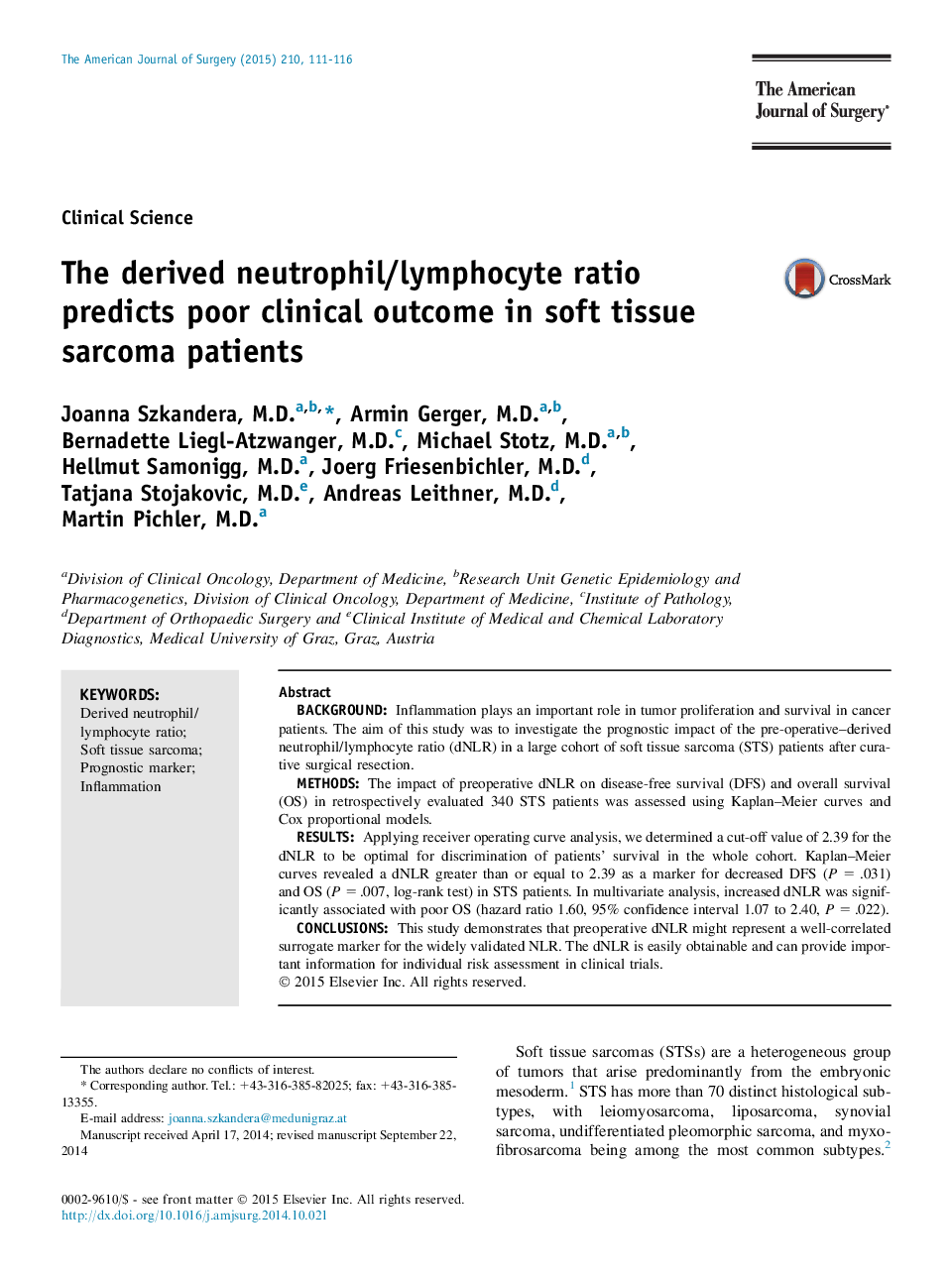| Article ID | Journal | Published Year | Pages | File Type |
|---|---|---|---|---|
| 4278441 | The American Journal of Surgery | 2015 | 6 Pages |
BackgroundInflammation plays an important role in tumor proliferation and survival in cancer patients. The aim of this study was to investigate the prognostic impact of the pre-operative–derived neutrophil/lymphocyte ratio (dNLR) in a large cohort of soft tissue sarcoma (STS) patients after curative surgical resection.MethodsThe impact of preoperative dNLR on disease-free survival (DFS) and overall survival (OS) in retrospectively evaluated 340 STS patients was assessed using Kaplan–Meier curves and Cox proportional models.ResultsApplying receiver operating curve analysis, we determined a cut-off value of 2.39 for the dNLR to be optimal for discrimination of patients' survival in the whole cohort. Kaplan–Meier curves revealed a dNLR greater than or equal to 2.39 as a marker for decreased DFS (P = .031) and OS (P = .007, log-rank test) in STS patients. In multivariate analysis, increased dNLR was significantly associated with poor OS (hazard ratio 1.60, 95% confidence interval 1.07 to 2.40, P = .022).ConclusionsThis study demonstrates that preoperative dNLR might represent a well-correlated surrogate marker for the widely validated NLR. The dNLR is easily obtainable and can provide important information for individual risk assessment in clinical trials.
